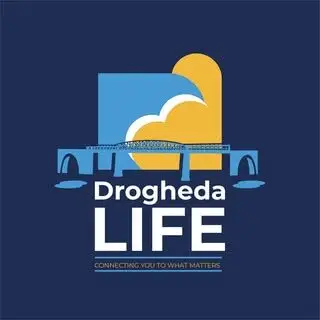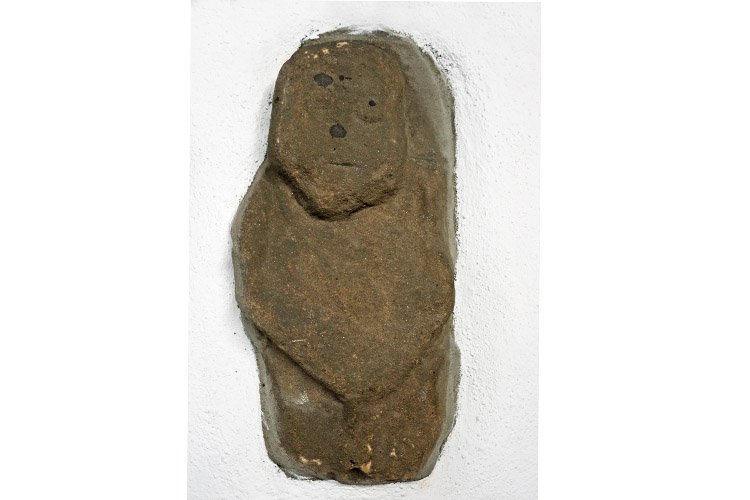By Sean Collins
Traffic congestion is by no means a new phenomenon in Drogheda. In 1939 an engineer called Frank Gibney said in a report to Drogheda Corporation that the only way to relieve Drogheda’s growing traffic congestion was to build a ring road around the town.
The Corporation took this advice on board but it was to be another 31 years before they acted upon it and began constructing a road that would change the layout of the medieval town forever.
In 1970 the destruction began and intrepid young local reporter Paul Murphy set out to photograph for posterity some soon to be demolished Medieval Drogheda.
Perhaps one of the most important photographs he captured was that of the Sheela na Gig high up on the wall of 18 John Street which is now buried by the dual carriageway. It is perhaps the only picture of the carving in situ at John Street.
Sheela na Gigs are ancient stone carvings of female figures with their thighs spread displaying their genitals that were placed over the entrances to Christian buildings and thought to be fertility symbols. The name Gig is thought to come from ‘gee’ a slang word for female genitalia.
The John Street Sheela was saved and brought to Millmount Museum by Harry Fairtlough and Jackie Rooney, probably on the bar of Harry’s bike or if not on Gerry Watson’s lorry. Eddie Quinn supervised the placing of the statue in the wall at Millmount Museum.

Anthony Weir, a distinguished medievalist, described the Drogheda carving thus: “It is 42 centimetres high, crudely carved in soft sandstone and somewhat worn. A large head is sunk between well-defined shoulders and has two irregular depressions for eyes, no nose and a slit mouth.
“Above and behind the head on the block from which the figure stands out in high relief, is a design or head dress of three hollow lozenges or ovals reminiscent of Romanesque decoration found in western France or western Ireland.
“Below the head hangs a pendant of inverted cone shape. The prominent arms clasp an object which might be interpreted as some sort of stick or baton, but which I am inclined to believe is an erect phallus. Below this is a raised area, consonant with interpretation as a scrotum, into which a circular deep hole has been obliquely bored. If I am right this figure is an anal-exhibitionist”.
Weir’s description raises the question as to whether Drogheda’s carving is that of Sheela na Gig, or a Seamas na Gig?
The ancient figures generally depicted a woman demonstratively showing her genitals and are linked with the medieval belief that by showing this part of her anatomy, a woman can even make the devil himself take flight. A correspondent writing to the Irish Times in the 1970s requested to know if the collection of the Sheela na Gigs at the National Museum which were not available to the public had been placed in nappies to protect the innocent!
In Drogheda folklore, it was suggested that the statue was the popularly used sign for a brothel. So on that basis it seems John Street was the red light district of the town. A more popular belief in the town was that there was a fertility rite associated to the statue. If a woman wished to become pregnant she could go and pray at the statue and her wish might be granted. The fertility rite idea is popular in other areas where the statues were found.
Johann Kohl, a German traveller to Ireland in the 1840s, wrote a lengthy piece on his visit to Drogheda, and while he did not mention our Sheela na Gig, he did refer to other such statues he had viewed on his journey. Ireland has the greatest number of known Sheela na Gigs, where one theory suggests they are found only in areas of Norman influence. Drogheda being a medieval Norman town fits the category very well.
Writing in the Journal of the Louth Archaeological Society in 1977, Anthony Weir said, “the original home of the figure, before it made its way to a Victorian house in John St., was almost certainly the Priory of the Knight’s Hospitallers founded in Drogheda by Walter de Lacy at the close of the 12th century and situated very close to John Street”. The site today of Drogheda’s Bus Eireann Depot.




